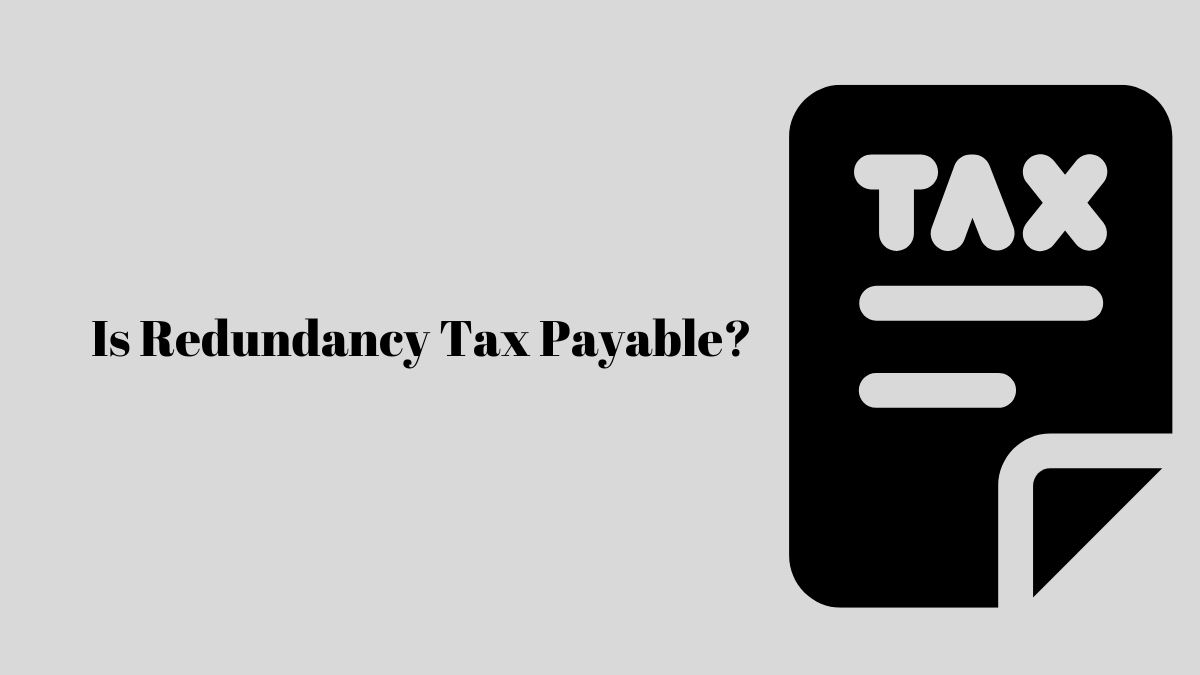If you are facing redundancy, it is natural to have questions about your future, especially when it comes to taxes. In this article, we will answer all you queries related to: is redundancy tax payable or not and many more. Have a look:
Contents
What Is Redundancy and Redundancy Pay?
Redundancy occurs when your employer reduces its workforce, often due to economic instability or changes in business needs. When you are made redundant, you receive a lump sum payment known as redundancy pay.
Types of Redundancy Pay
THere are two types of Redundancy pay. Have a look:
Statutory Redundancy Pay
If you have worked for at least two years continuously, you qualify for this mandatory payment. The amount depends on your age, salary, and length of service. For each complete year of service aged 41 or over: One and a half week’s pay.
- For each complete year of service aged 22 to 40: One week’s pay.
- For each complete week of service under 22: Half a week’s pay.
- The maximum statutory redundancy pay is £19,290, and the service period is capped at 20 years.
- Weekly rate: Currently capped at £643 gross per week.
Enhanced Redundancy Pay
- Some employers offer more than the legal minimum. This can be outlined in your employment contract or negotiated during redundancy discussions.
Notice Period and Tax Implications:
- Based on your length of service 2 to 12 years:
- One week’s notice per year of service.
- Over 12 years: Capped at 12 weeks.
- If you have worked less than two years, you will not receive statutory redundancy pay.
- Also:
- Pay instead of Notice (PILON): A lump sum taxed like ordinary pay.
- Gardening Leave: You are still employed and receive salary and benefits but do not work.
Is redundancy tax payable?
- The first £30,000 of your redundancy pay is tax-free.
- Any amount above £30,000 is subject to income tax at the standard rate.
- Remember to include your redundancy pay on your tax return.
What If Your Employer Does Not Pay?
If your employer fails to pay as required, consider these steps:
- Take professional advice.
- Check your employment contract.
- Understand your rights and options.
Remember, while redundancy can be challenging, understanding the tax implications will help you plan better.
Tax-Free Threshold and Beyond:
- Tax-Free Threshold: The first £30,000 of your redundancy pay is tax-free. This means you will not owe any income tax on this portion.
- It is like finding a hidden treasure – you get to keep it all!
- Taxable Amount: Any redundancy pay exceeding £30,000 is subject to income tax.
- The standard income tax rates apply to this surplus amount.
- Remember to include this in your annual tax return.
FAQs
What is redundancy pay?
Redundancy pay is the lump sum you receive when your employer decides to reduce its workforce and terminate your employment. It can be either statutory or enhanced, depending on your contract and employer’s policy.
How is redundancy pay calculated?
Statutory redundancy pay is based on your salary, age and length of service. You get one and a half week’s pay for each year of service over 41, one week’s pay for each year of service between 22 and 40, and half a week’s pay for each year of service under 22.
The maximum amount of statutory redundancy pay is £19,290. Enhanced redundancy pay is more than the legal minimum and is determined by your employer.
Read More:
- How to Apply for Personal Independence Payment (PIP): How long does PIP take
- What is a P60: What is it, and How do you get one?
- What is a P45 meaning and how do I get one?
- Is £100k after tax a Good Salary in the UK?
- How Much Do I Need To Retire in Uk?

I am a dedicated lifestyle and fashion enthusiast, always looking for the latest trends and timeless styles. With a flair for creativity and a passion for self-expression, I provide fresh insights and tips on elevating everyday living and personal style.
















